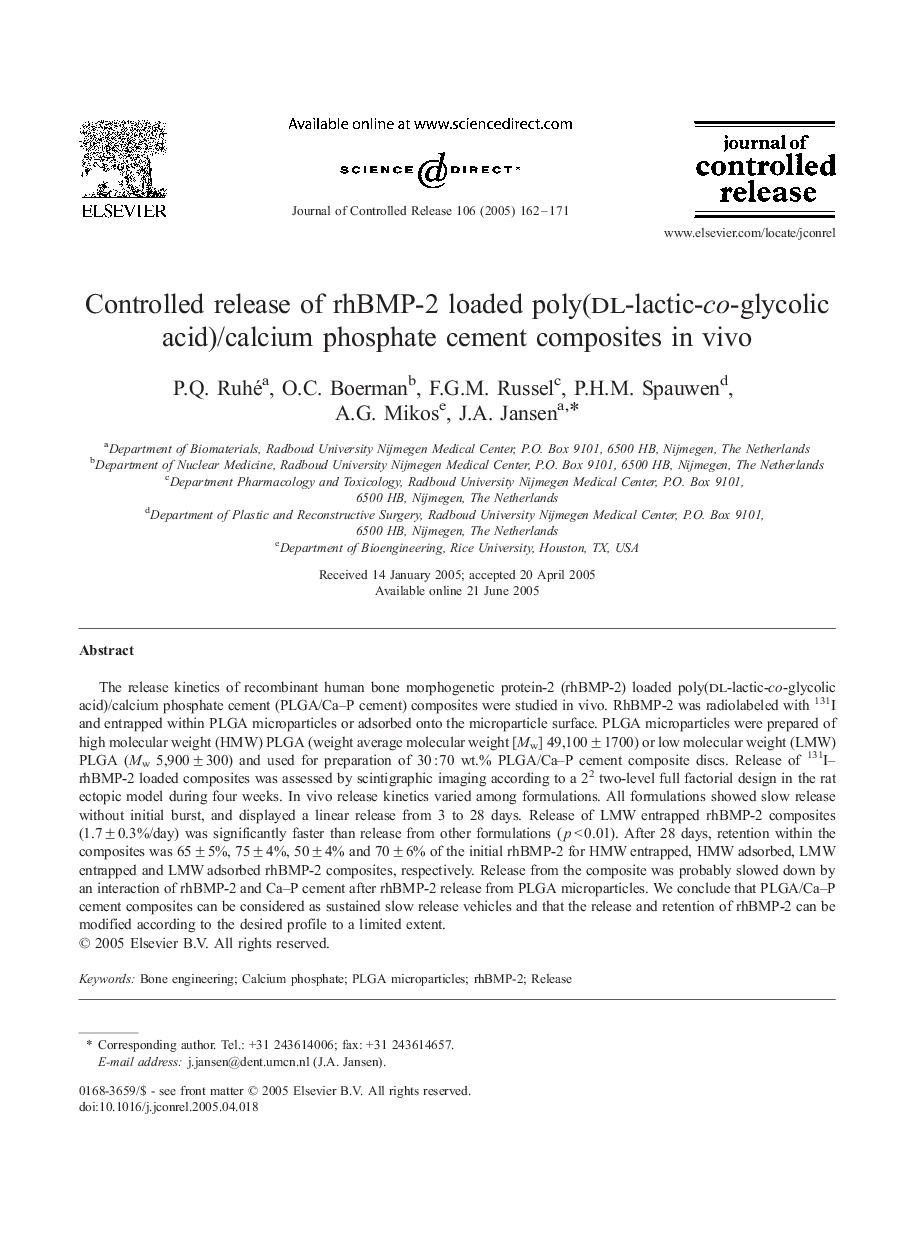| Article ID | Journal | Published Year | Pages | File Type |
|---|---|---|---|---|
| 9774660 | Journal of Controlled Release | 2005 | 10 Pages |
Abstract
The release kinetics of recombinant human bone morphogenetic protein-2 (rhBMP-2) loaded poly(dl-lactic-co-glycolic acid)/calcium phosphate cement (PLGA/Ca-P cement) composites were studied in vivo. RhBMP-2 was radiolabeled with 131I and entrapped within PLGA microparticles or adsorbed onto the microparticle surface. PLGA microparticles were prepared of high molecular weight (HMW) PLGA (weight average molecular weight [Mw] 49,100 ± 1700) or low molecular weight (LMW) PLGA (Mw 5,900 ± 300) and used for preparation of 30 : 70 wt.% PLGA/Ca-P cement composite discs. Release of 131I-rhBMP-2 loaded composites was assessed by scintigraphic imaging according to a 22 two-level full factorial design in the rat ectopic model during four weeks. In vivo release kinetics varied among formulations. All formulations showed slow release without initial burst, and displayed a linear release from 3 to 28 days. Release of LMW entrapped rhBMP-2 composites (1.7 ± 0.3%/day) was significantly faster than release from other formulations (p < 0.01). After 28 days, retention within the composites was 65 ± 5%, 75 ± 4%, 50 ± 4% and 70 ± 6% of the initial rhBMP-2 for HMW entrapped, HMW adsorbed, LMW entrapped and LMW adsorbed rhBMP-2 composites, respectively. Release from the composite was probably slowed down by an interaction of rhBMP-2 and Ca-P cement after rhBMP-2 release from PLGA microparticles. We conclude that PLGA/Ca-P cement composites can be considered as sustained slow release vehicles and that the release and retention of rhBMP-2 can be modified according to the desired profile to a limited extent.
Related Topics
Physical Sciences and Engineering
Materials Science
Biomaterials
Authors
P.Q. Ruhé, O.C. Boerman, F.G.M. Russel, P.H.M. Spauwen, A.G. Mikos, J.A. Jansen,
